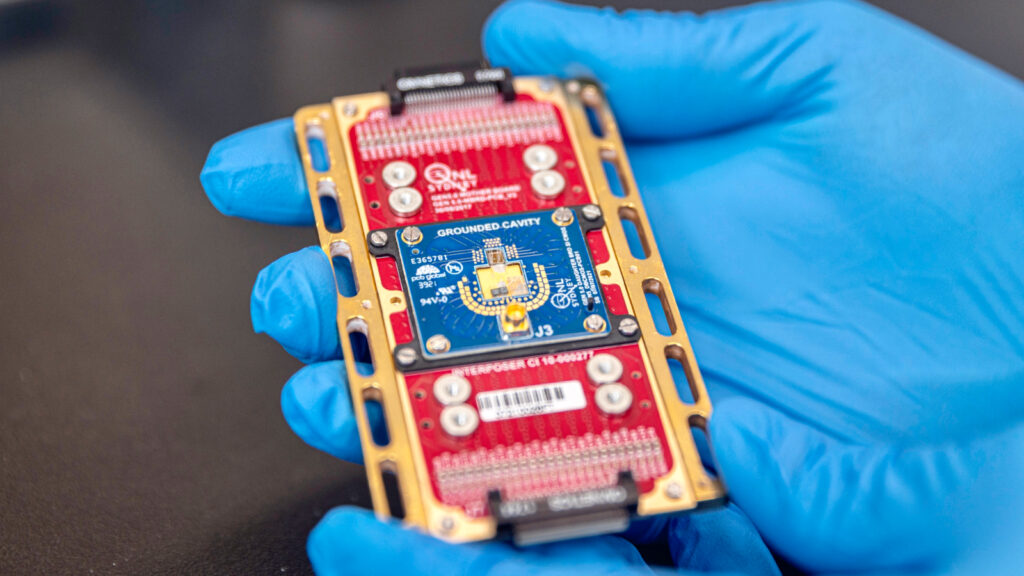
SAN FRANCISCO – In a groundbreaking development, scientists have unveiled a revolutionary computer chip that paves the way for practical quantum computing by enabling the integration of millions of qubits and their control systems on a single device.
Breaking: Cryogenic Chip Revolutionizes Quantum Computing
The new control chip functions at cryogenic temperatures close to absolute zero, approximately minus 459.67 degrees Fahrenheit (or minus 273.15 degrees Celsius), allowing it to be positioned near qubits without disturbing their delicate quantum state.
“This result has been more than a decade in the making, building up the know-how to design electronic systems that dissipate tiny amounts of power and operate near absolute zero,” said David Reilly, lead researcher and professor at the University of Sydney Nano Institute and School of Physics.
The study, published on June 25 in the journal Nature, marks a significant milestone towards integrating quantum and classical components on the same chip, a crucial step towards scalable quantum processors.
Immediate Impact
Qubits, the quantum counterparts of binary bits in classical computers, can exist in a “superposition” of states, enabling quantum computers to perform multiple calculations simultaneously. This capability allows them to tackle problems beyond the reach of today’s classical computers.
Spin qubits, which encode information in the spin state of an electron, have attracted attention due to their compatibility with complementary metal-oxide-semiconductor (CMOS) technology, the same process used for modern smartphone and PC chips.
Key Details Emerge
Unlike other types of qubits, such as superconducting, photonic, or trapped-ion qubits, spin qubits can be produced on a massive scale using existing equipment. However, they must be maintained at temperatures below 1 kelvin to preserve “coherence,” the ability to maintain superposition and entanglement over time.
“This will take us from the realm of quantum computers being fascinating laboratory machines to the stage where we can start discovering the real-world problems that these devices can solve for humanity,” Reilly added.
Industry Response
Integrating the necessary electronics to control and measure spin qubits has been a longstanding challenge due to the sensitivity of qubits to heat and electrical interference. The new CMOS chip, designed for cryogenic environments, operates at ultra-low power levels, allowing it to be integrated with qubits without generating disruptive noise.
In experimental trials, the control chip was placed less than 1 millimeter from the qubits, successfully performing single-gate and two-qubit gate operations without introducing measurable electrical noise or affecting accuracy, stability, or coherence.
By the Numbers
- The control chip consumed only 10 microwatts of power in total.
- Analogue components used 20 nanowatts per megahertz.
What Comes Next
The findings are expected to inspire further exploration into the potential of spin qubits. According to Kushal Das, senior hardware engineer at Emergence Quantum and co-author of the study, “Now that we have shown that milli-kelvin control does not degrade the performance of single- and two-qubit quantum gates, we expect many will follow our lead.”
This advancement represents a significant shift from laboratory-scale quantum computers to devices capable of solving practical, real-world problems.
Expert Analysis
The announcement comes as the scientific community continues to grapple with the challenges of making quantum computing a practical reality. The ability to control qubits at scale without performance degradation is a major breakthrough, potentially accelerating the development of quantum technologies.
Reilly emphasized the broader implications of this technology, stating, “We see many further diverse uses for this technology, spanning near-term sensing systems to the data centers of the future.”
This development builds on years of research and expertise in designing low-noise cryogenic electronics that require minimal power, a crucial factor in advancing quantum computing capabilities.
As the field of quantum computing continues to evolve, the successful integration of millions of qubits on a single chip could herald a new era of computational power, unlocking solutions to complex problems across various industries.






